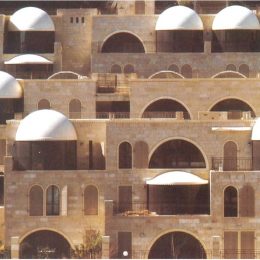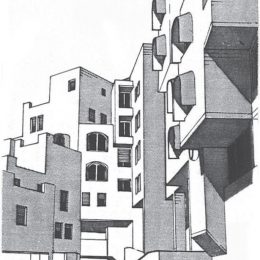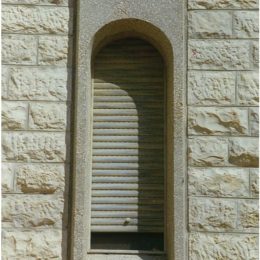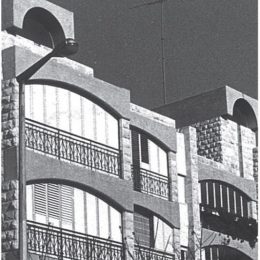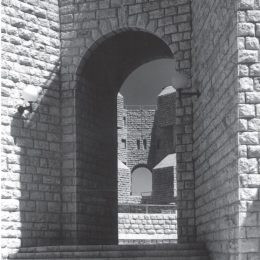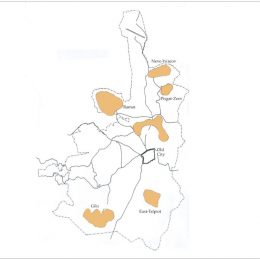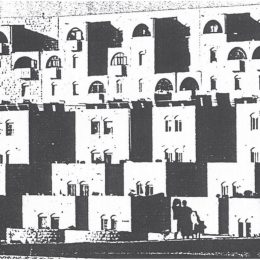Following the decline in the late 1960s of the International Style, the Neo-Oriental style emerged in Jerusalem’s urban scene, as a local version of Post-Modernism. The design features of Jerusalem’s Neo-Orientalism, which flourished until the late 1980s, echoes the romantic vocabulary of the Orient, derived mainly from the Old City’s walls, gates and alleyways. During this period, the overall urban fabric was dominated by small fragmented and staggered masses, as well as recessed, projected and sloping forms. The characteristic design features of Neo-Orientalism are arched gateways, a variety of precast concrete arched windows, arcades, protruding oriels and “bridge-type” structures.
Chapter E: Neo-Oriental Design, 1970s-1980s


